Please read the two previous blogs if you missed them. #1 cutting and #2 snowflakes
I am going to show you step by step how I made this dress using my favorite sheer fabric techniques.
Sew the darts, shoulder and side seams. Make a french seam at the shoulder. Read yesterday's blog if you don't know how.
Here is the basic method. For finished 1/4" binding, cut bias 1 5/8" wide. In theory it only needs to be 1 1/2" (6 times the finished width), but I like that extra 1/8" for a little wiggle room.
Press the bias in half. It should now be just a teeny, tiny bit wider than three times the width of the finished bias, so a generous 3/4". Sew the bias to the cut edge using a 1/4" seam allowance, then fold it around to the back and slip stitch the pressed fold of the bias tape in place.
But I am making a smaller bias edge, about 3/16", so I cut my bias 1 1/4", which becomes 5/8" when pressed in half. Then I used a generous 1/8" seam allowance when sewing it on, making a delicate neck edge for a tiny Elsa.
Since the sheer sleeves are going to be sewn to a sheer armhole, I will set the sleeves in with french seams. It will look better and since this fabric is a little scratchy it reminds me of my first ballet recital in Kindergarten, when I wore this white peasant blouse may mother made me with the scratchiest armholes of my life. All the mothers were given the fabric, so I can't blame her, but my strongest memory of the day was of itchy shoulders and armpits.
So that is another reason why I want to use a french seam. All the pointy stiff fibers will be bent inward, not at the skin of the wearer.
| | |
This will make the sleeve look good on the inside and out.
OH YEAH ... this is where I had to fix the mistake from yesterday. When assembling the cape, I sewed the back seam all the way up to the top. Now I have to carefully pick it open down to the point where the zipper will stop. The cape is not going to be sewn with the zipper, but it has to be able to open at its back seam so the dress can be taken on and off.
The front edge and the open part of the back seam of the cape need narrow double fold hems. I just stitched these by machine.
Try the dress on and mark the skirt and sleeve hems. Slip stitch around the walking slit in the skirt, if you left the front seam open for that.
DONE.
Tomorrow something for ME. I need a break from Frozen. But all next week I will be making Anna's winter dress and cape.
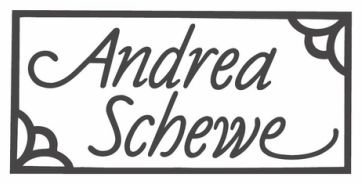

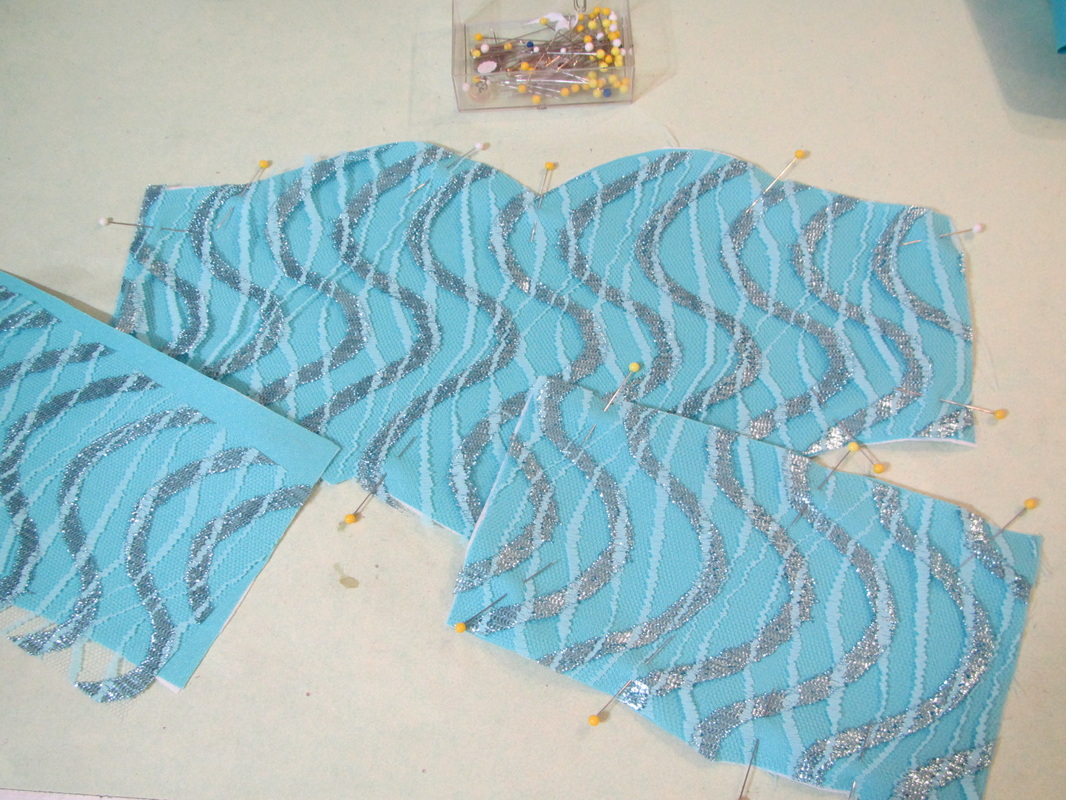
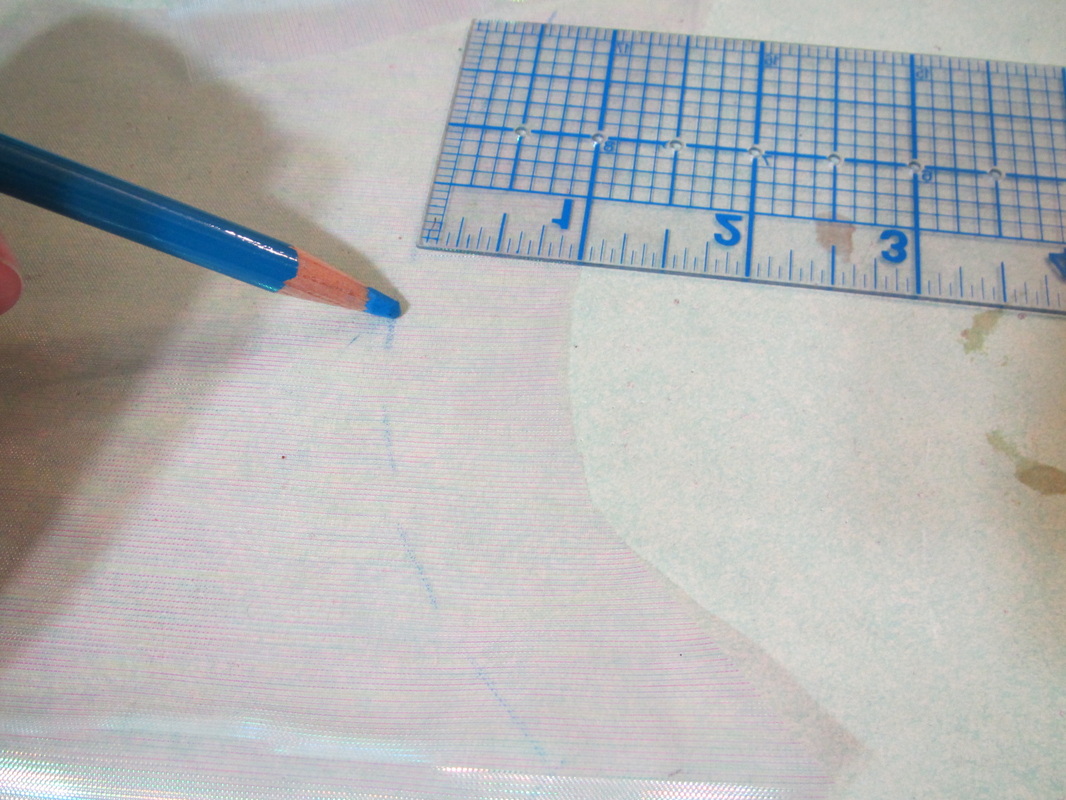
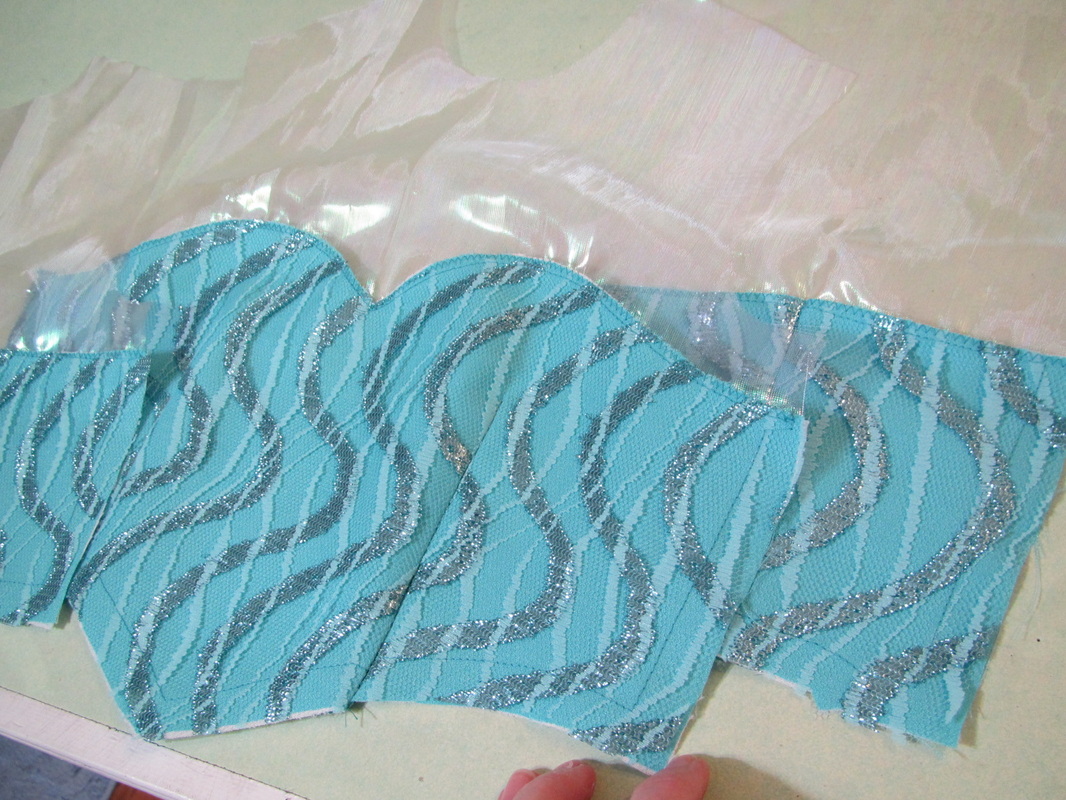
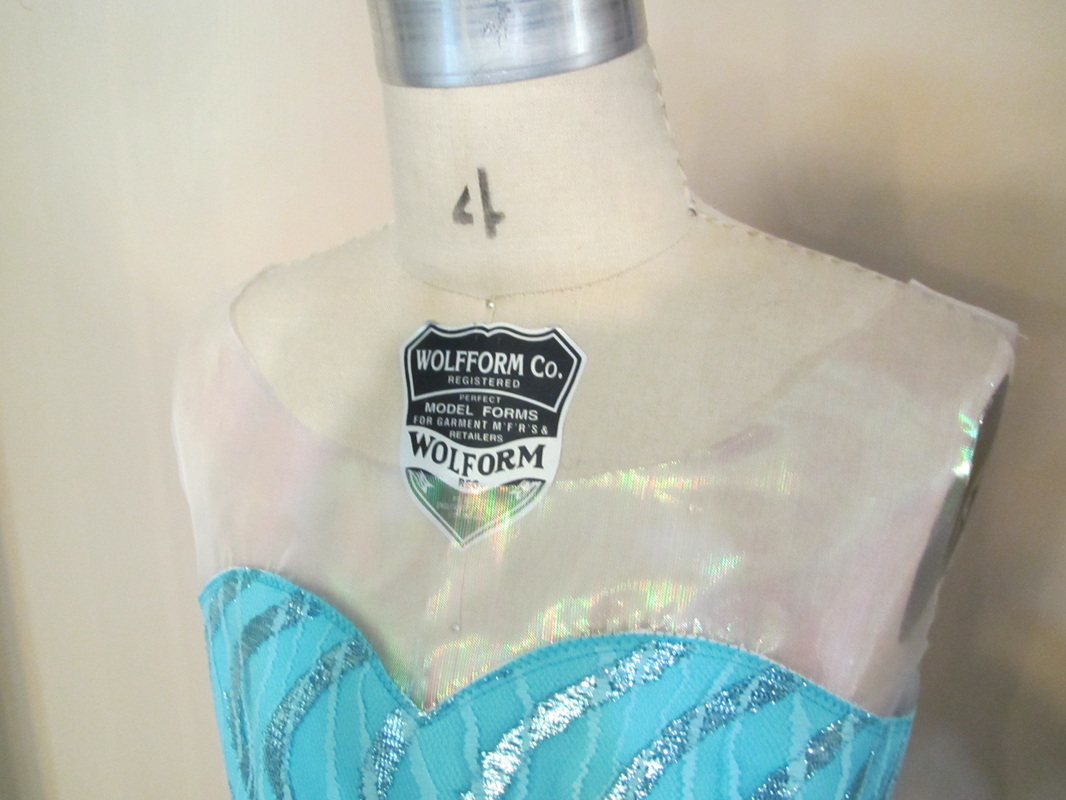
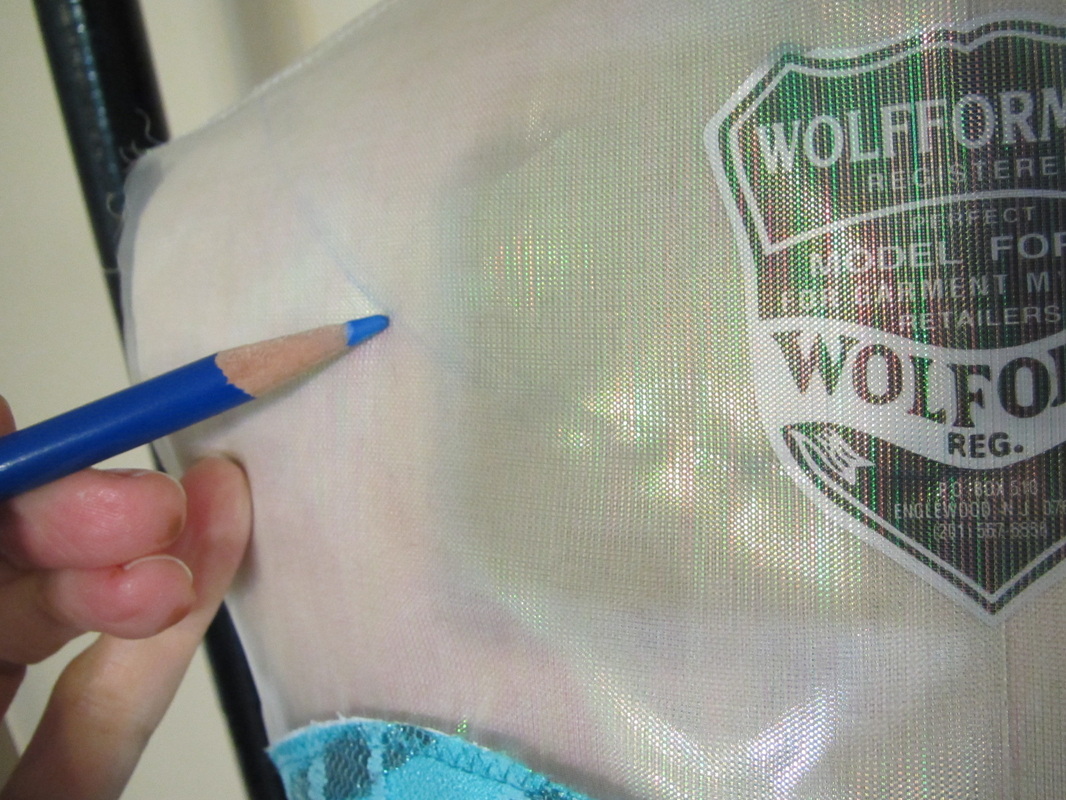
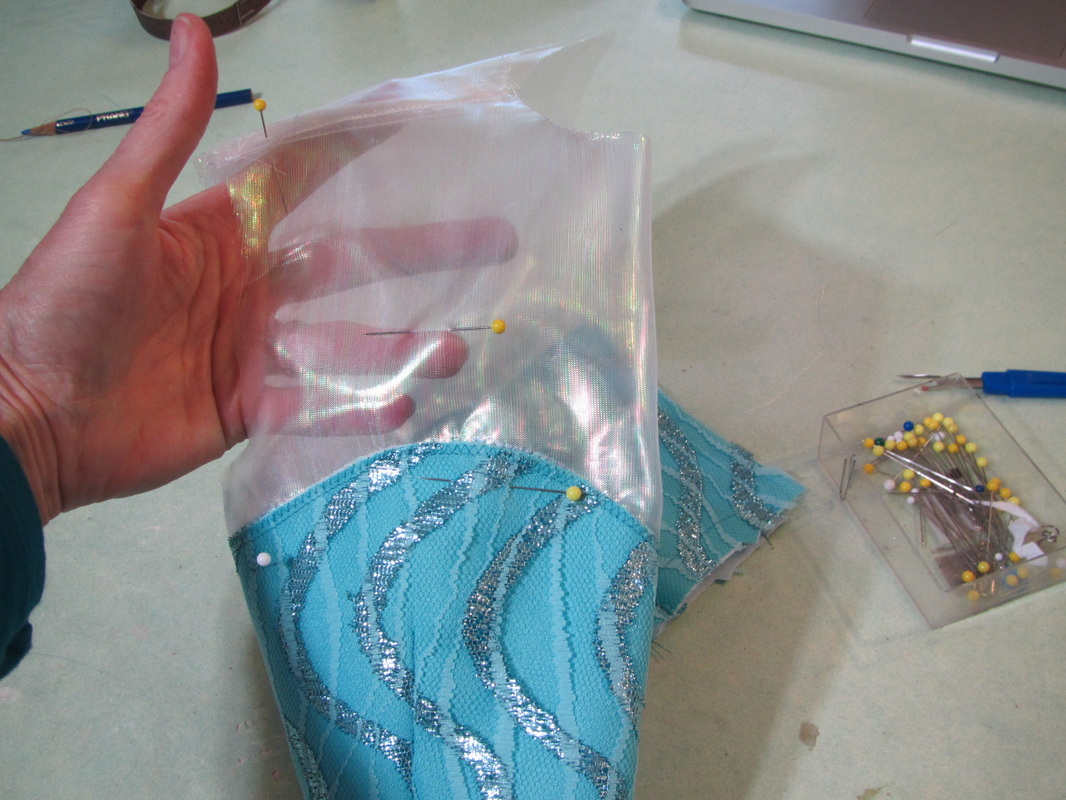
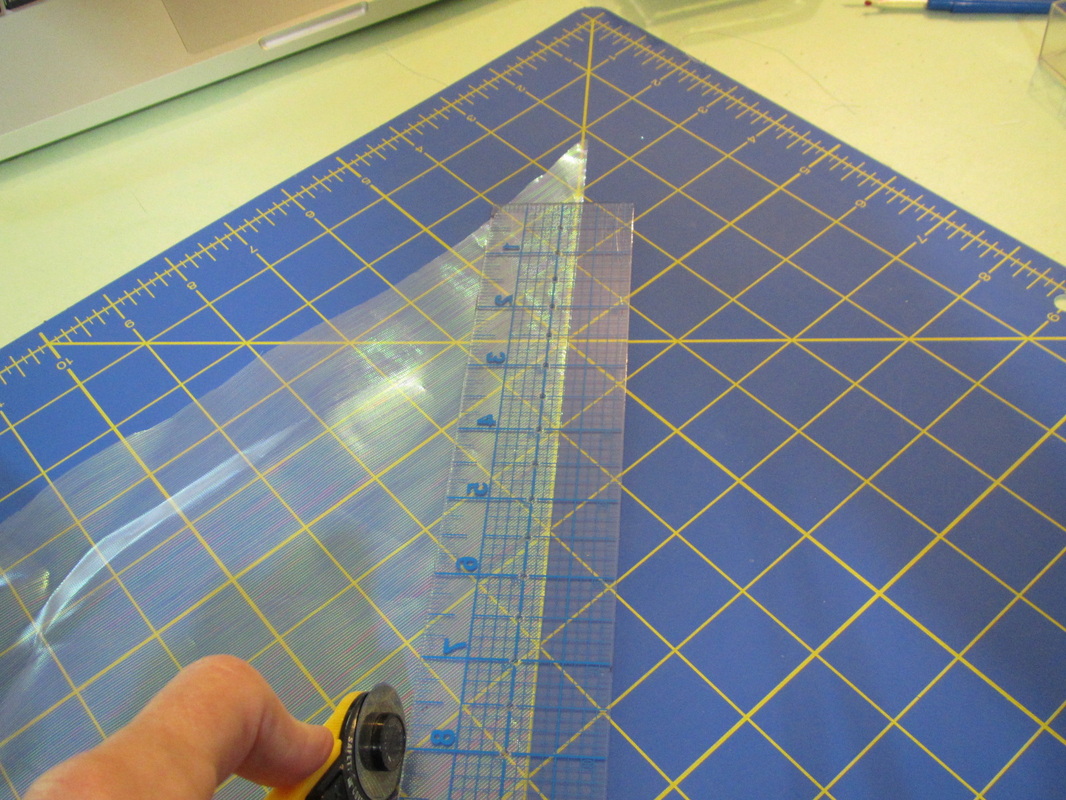
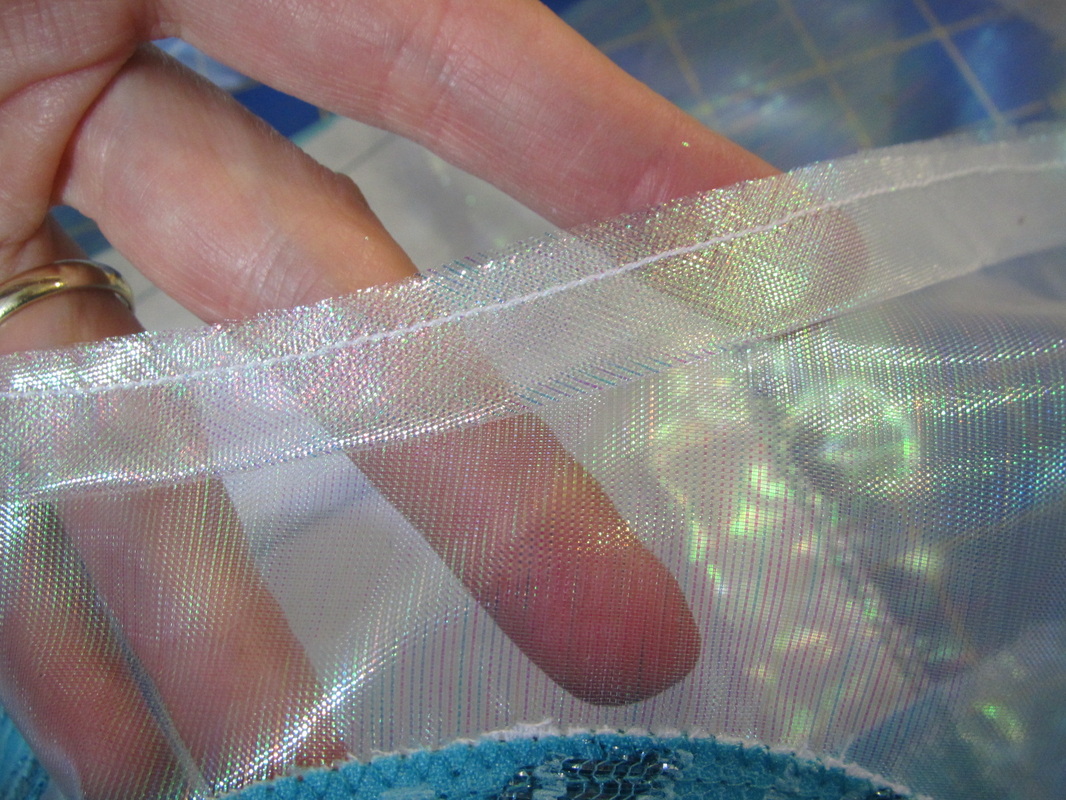
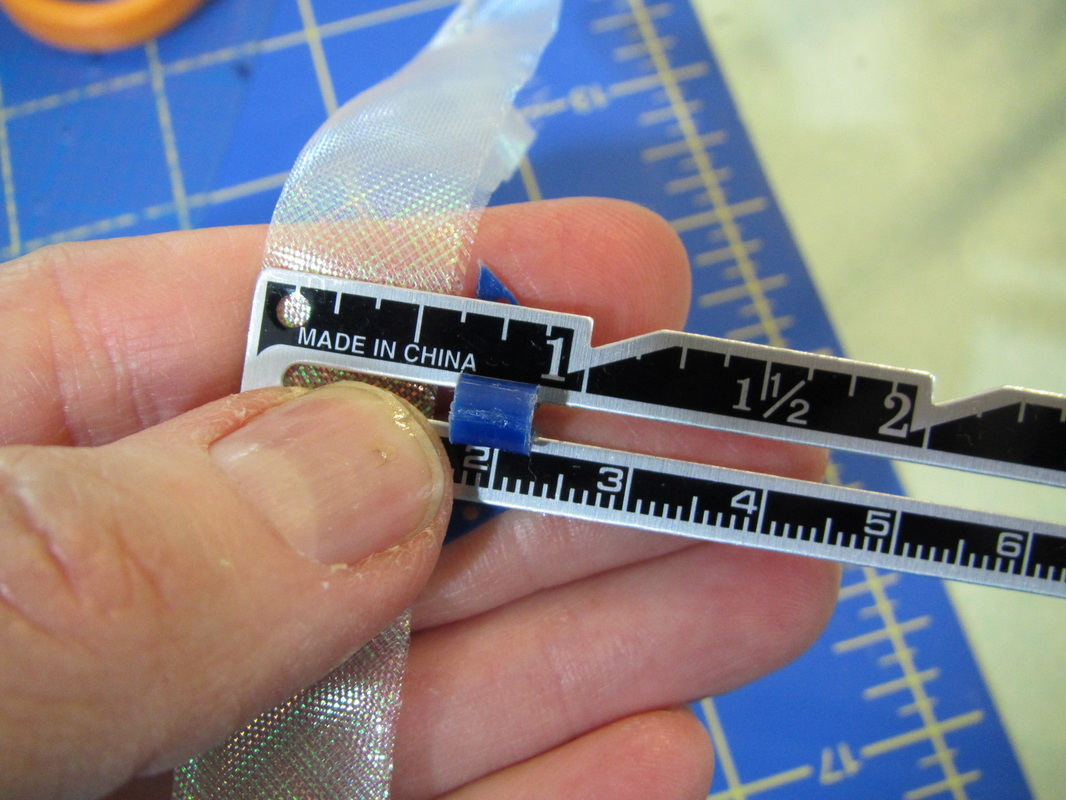
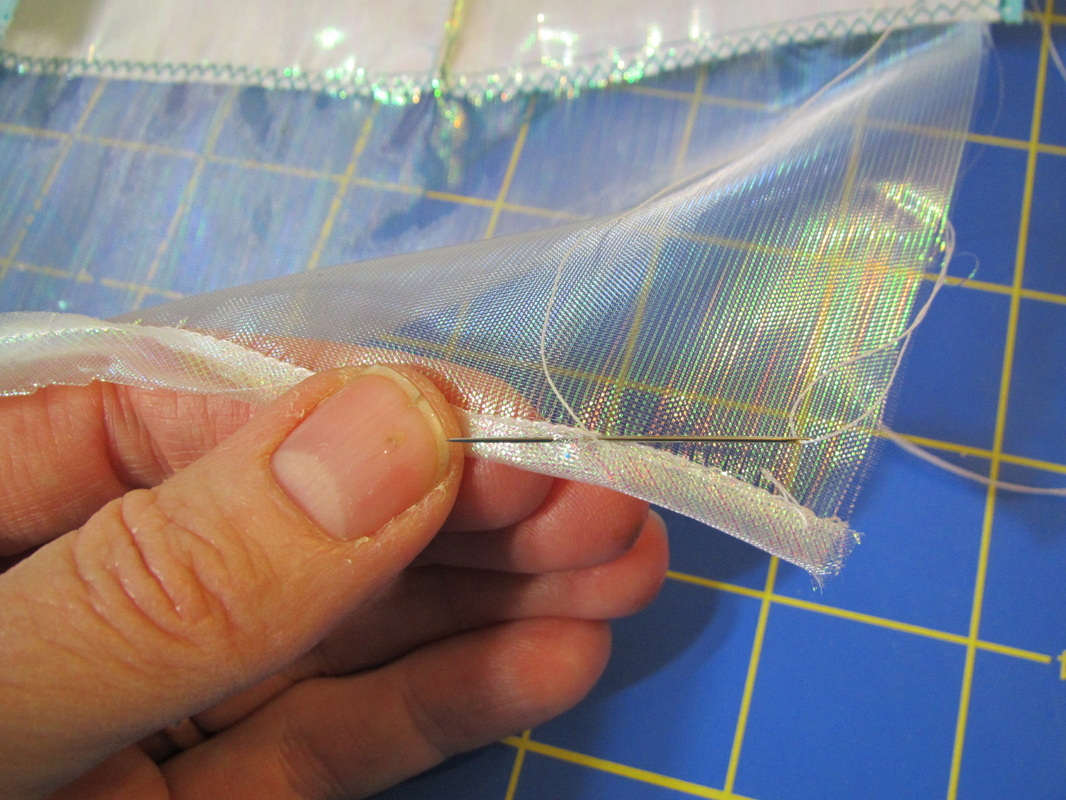
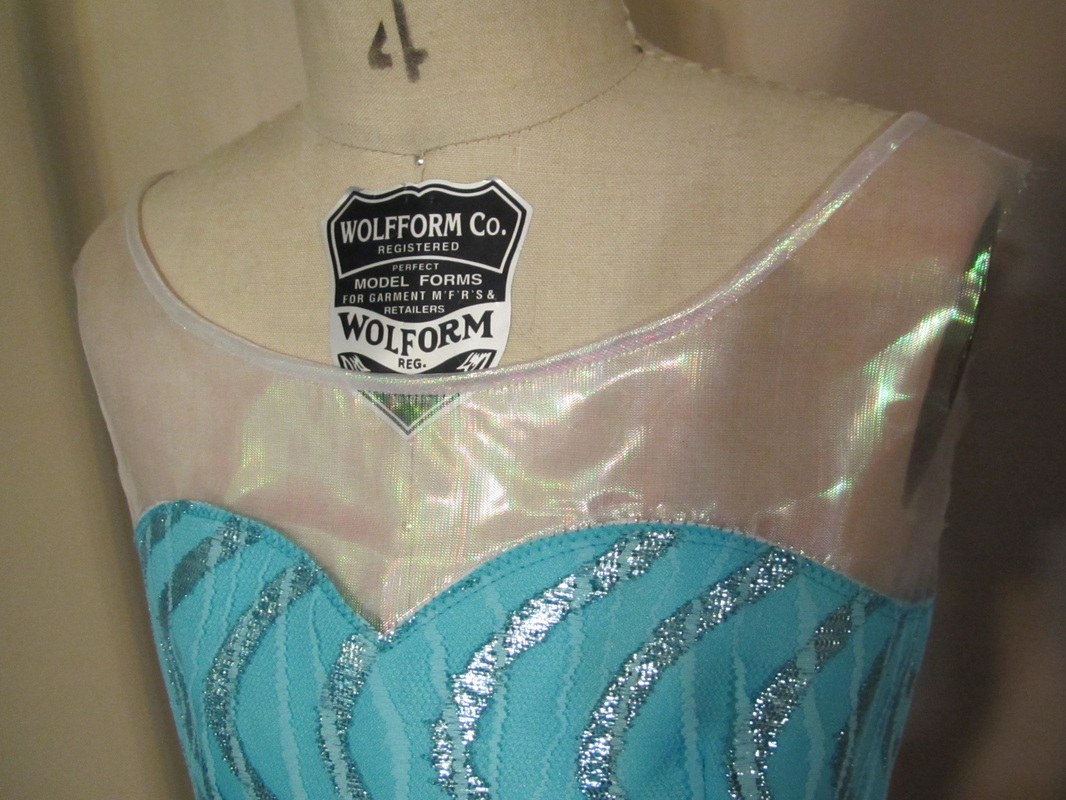
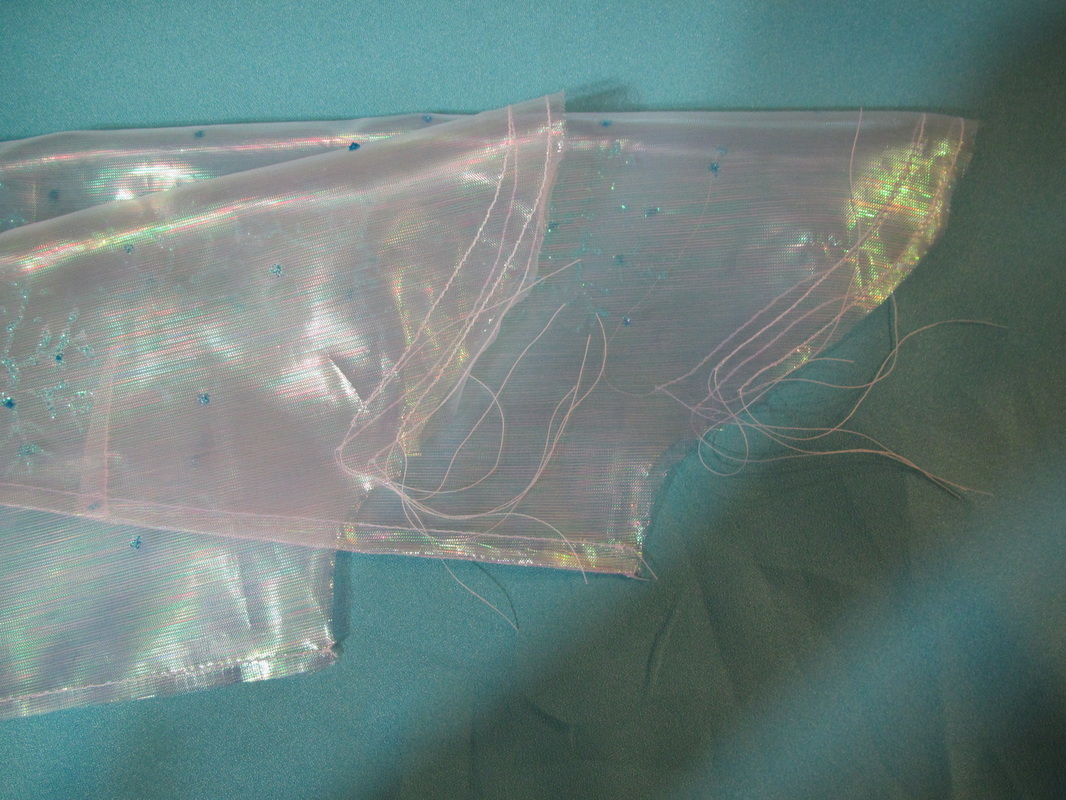
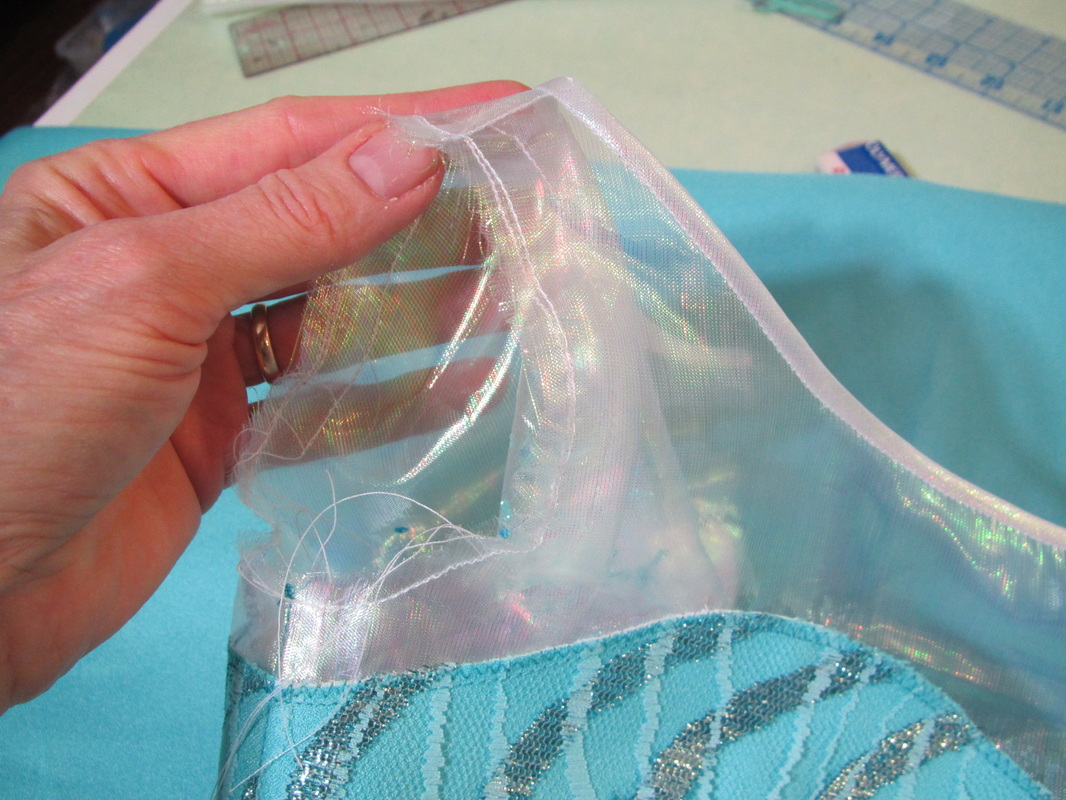
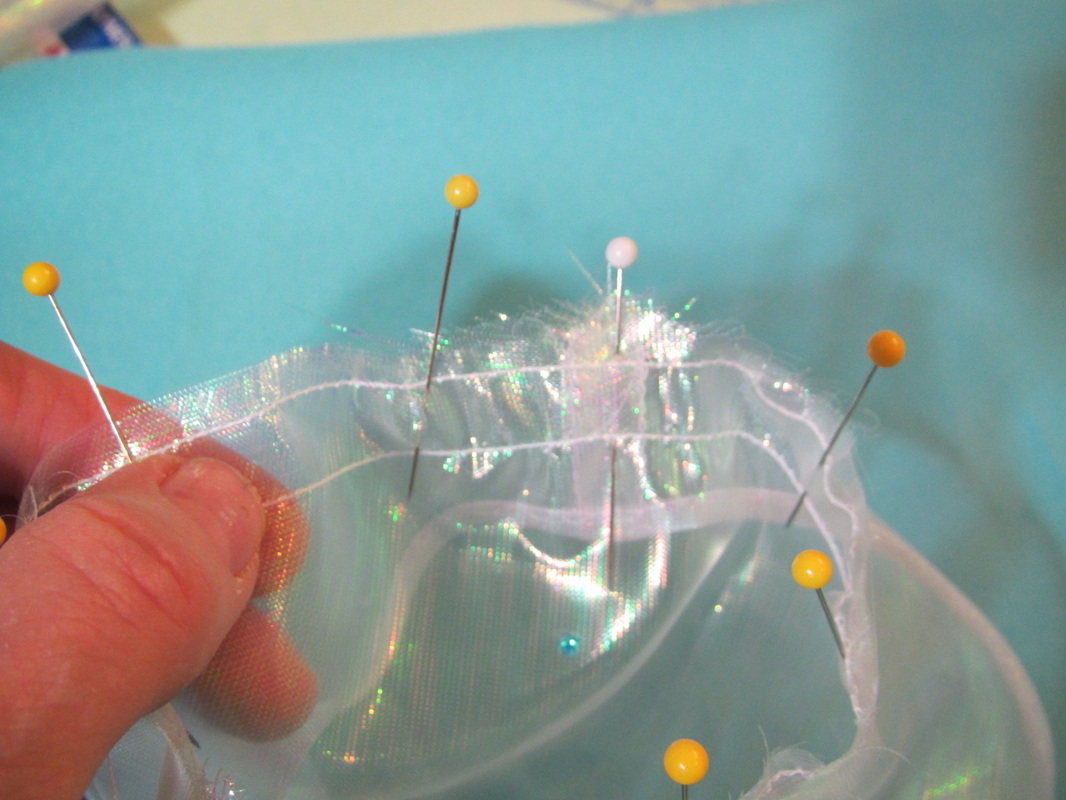
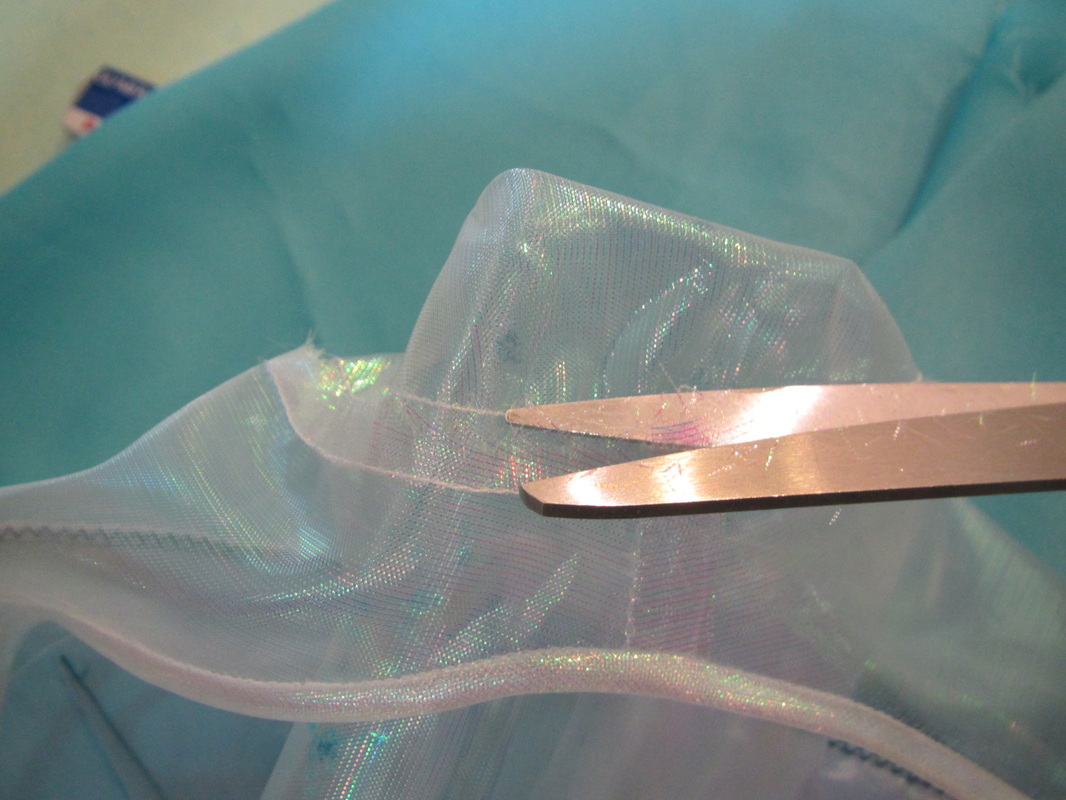
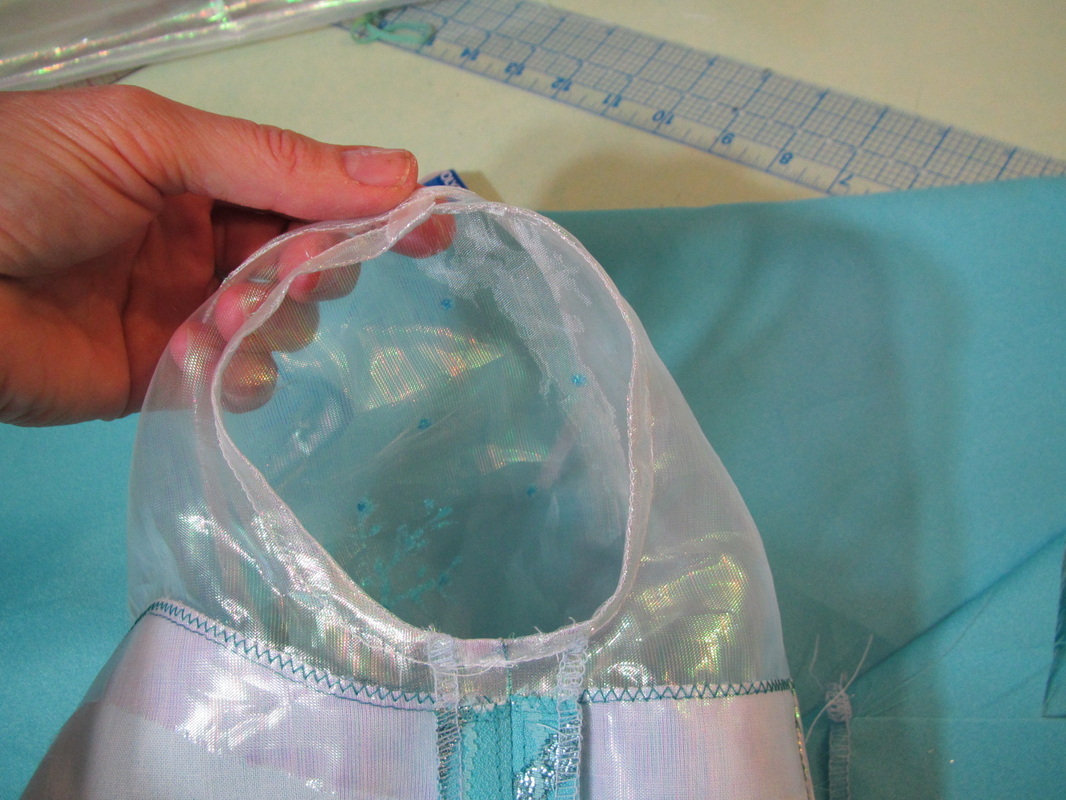
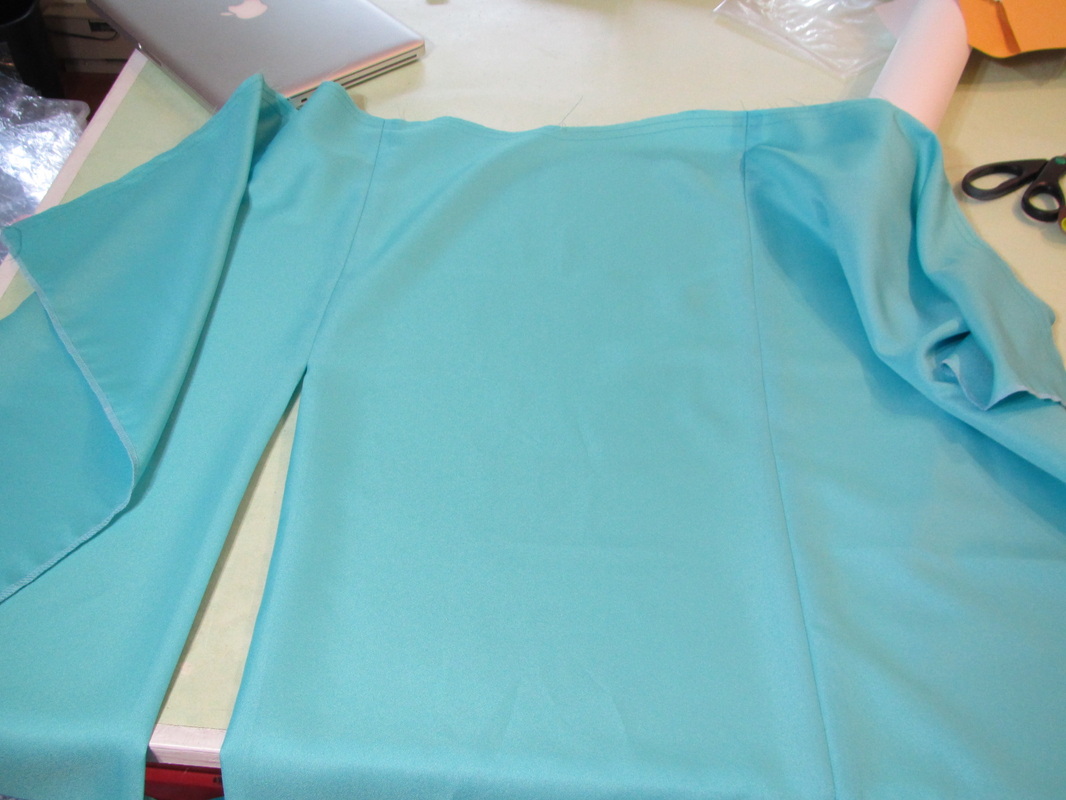
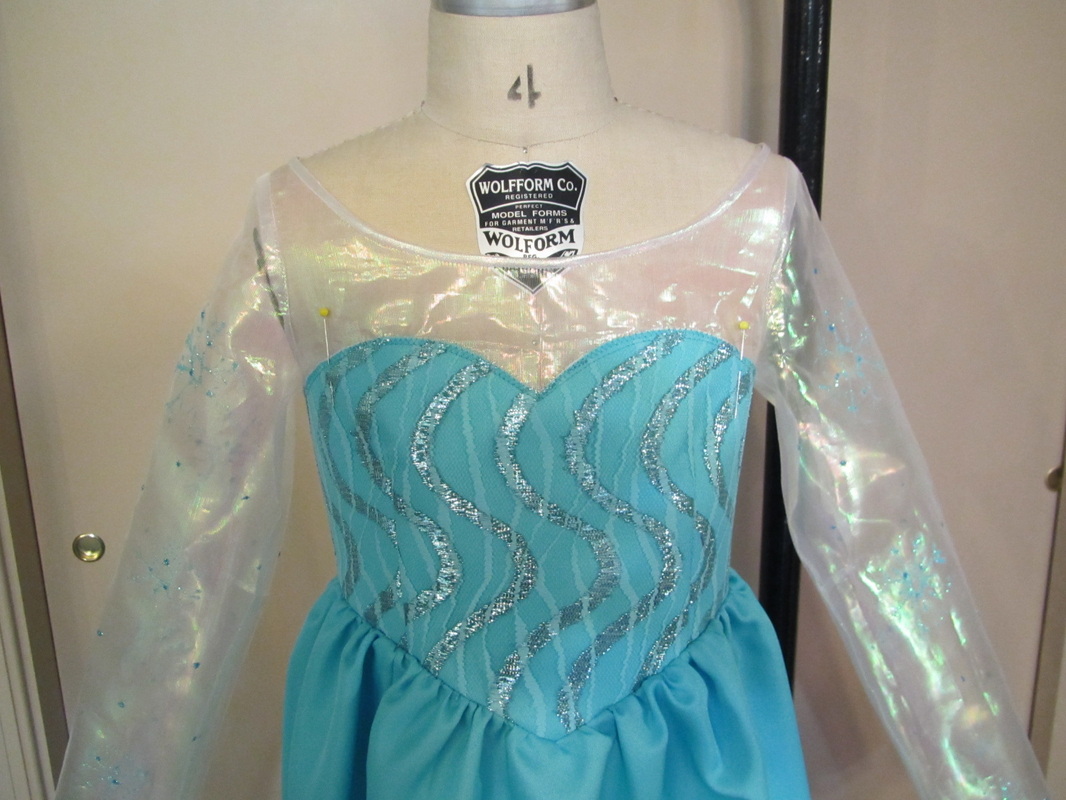
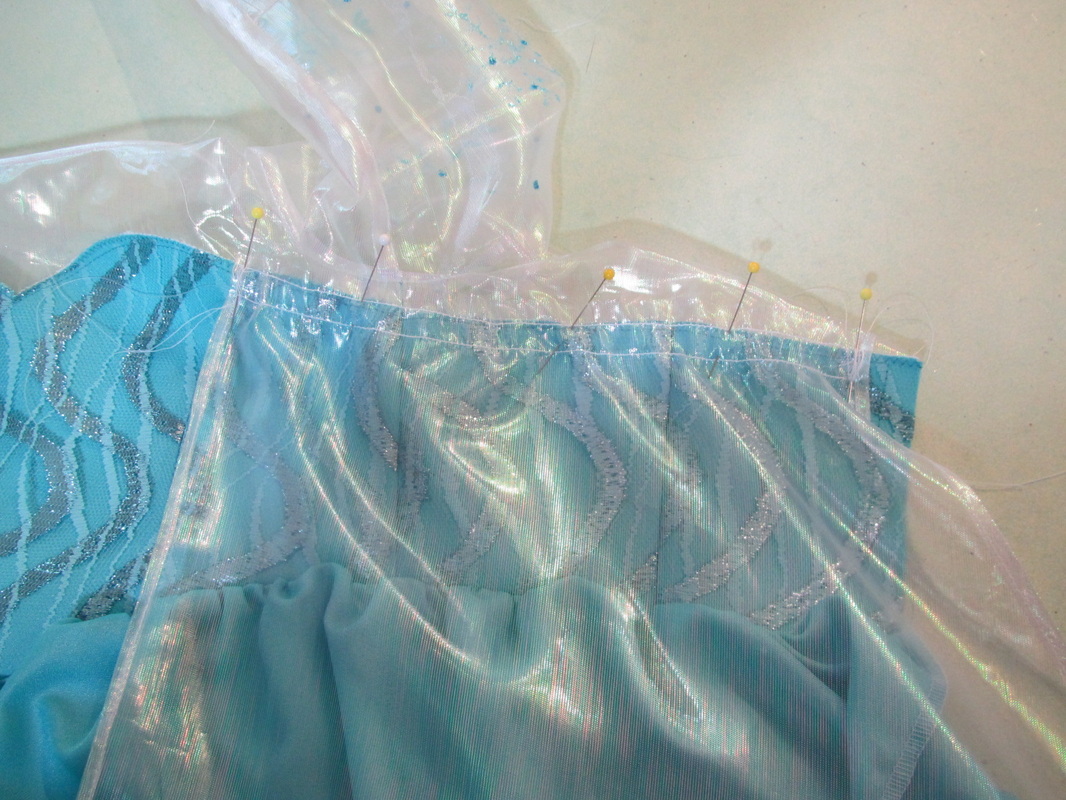
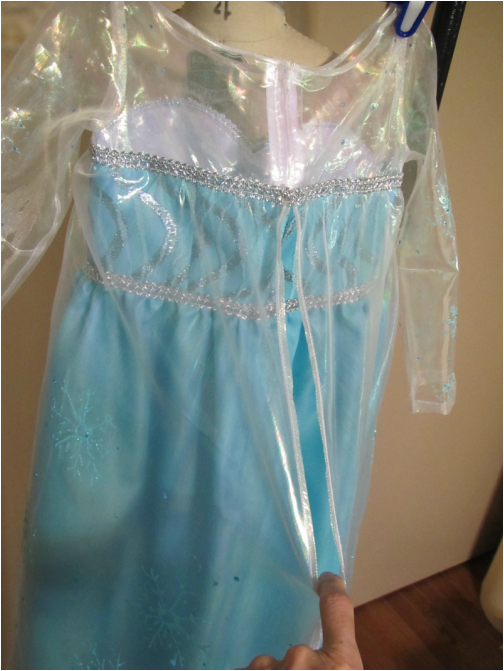
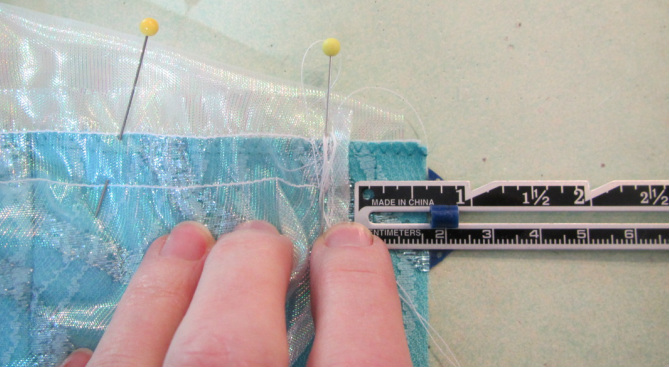
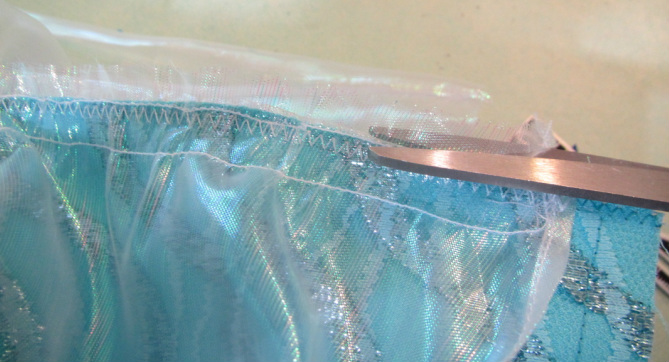
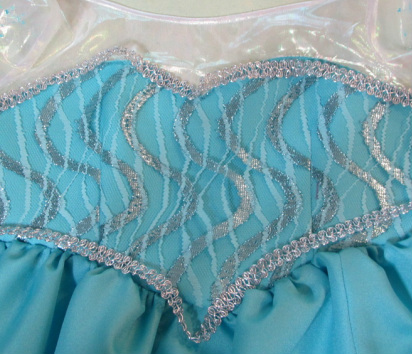
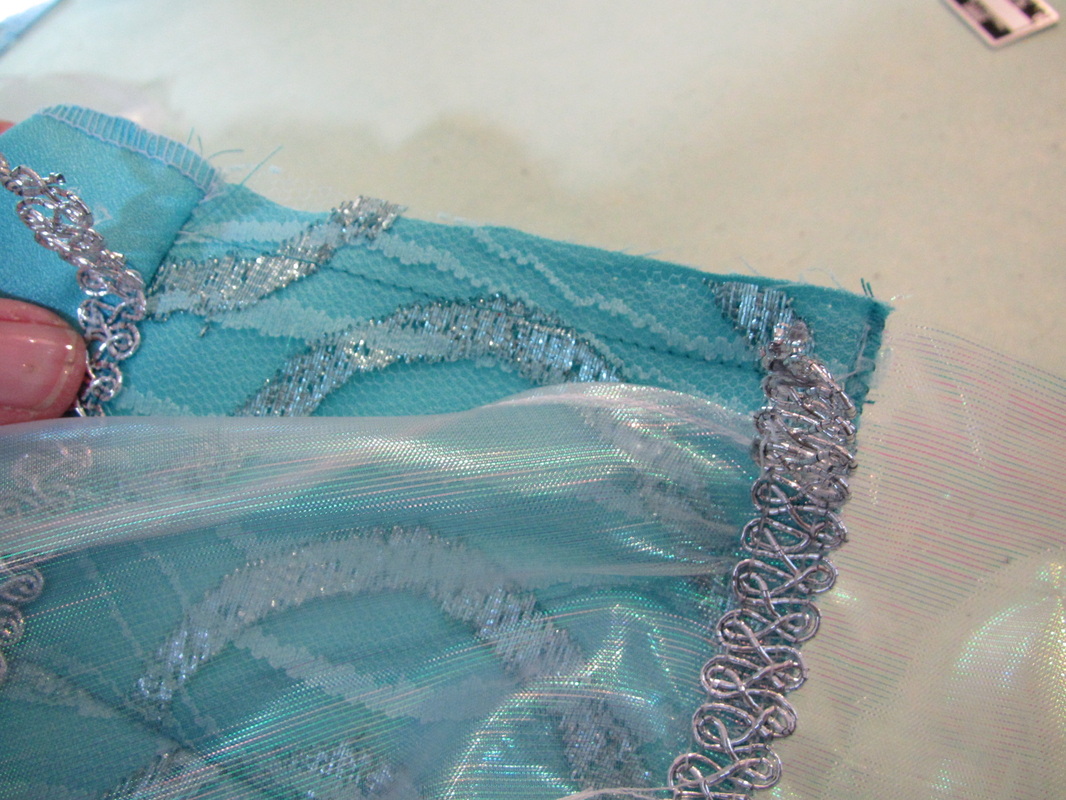
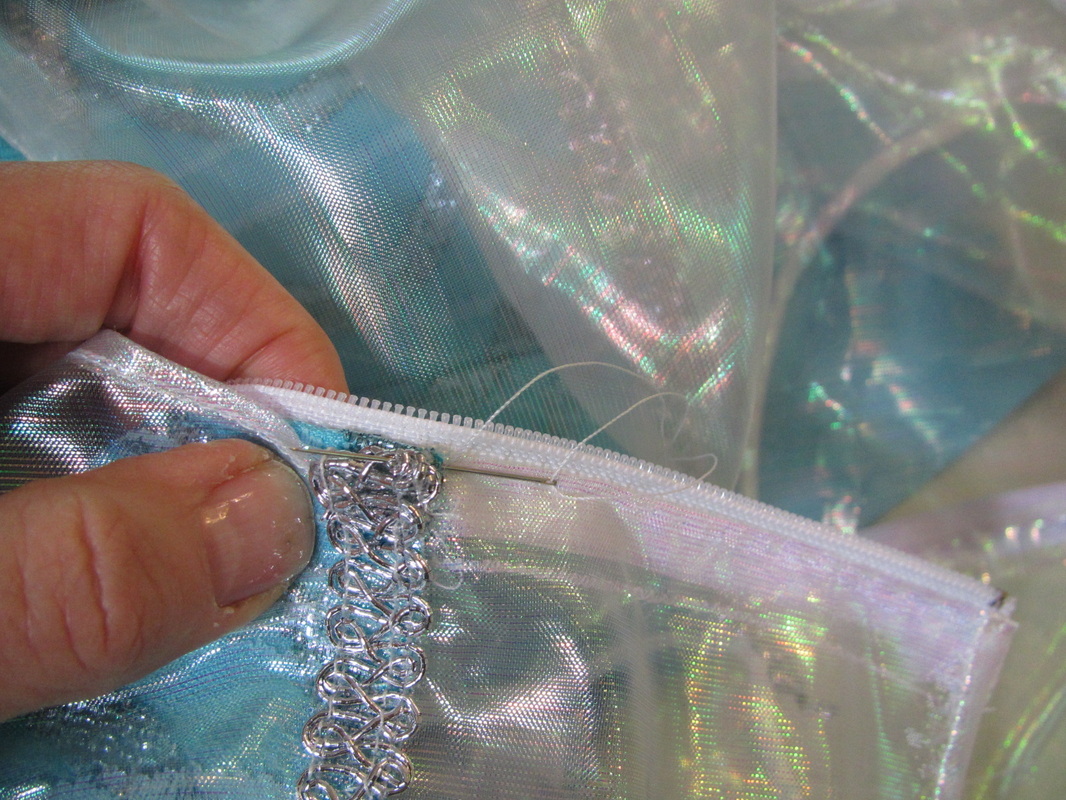
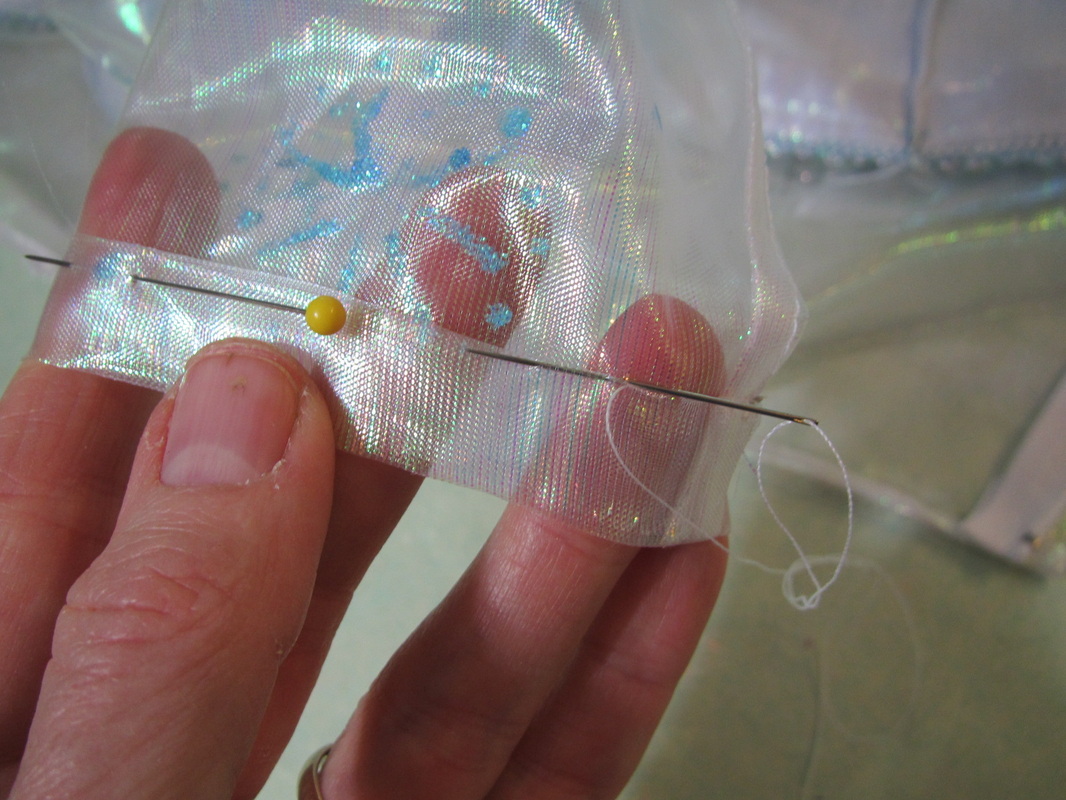
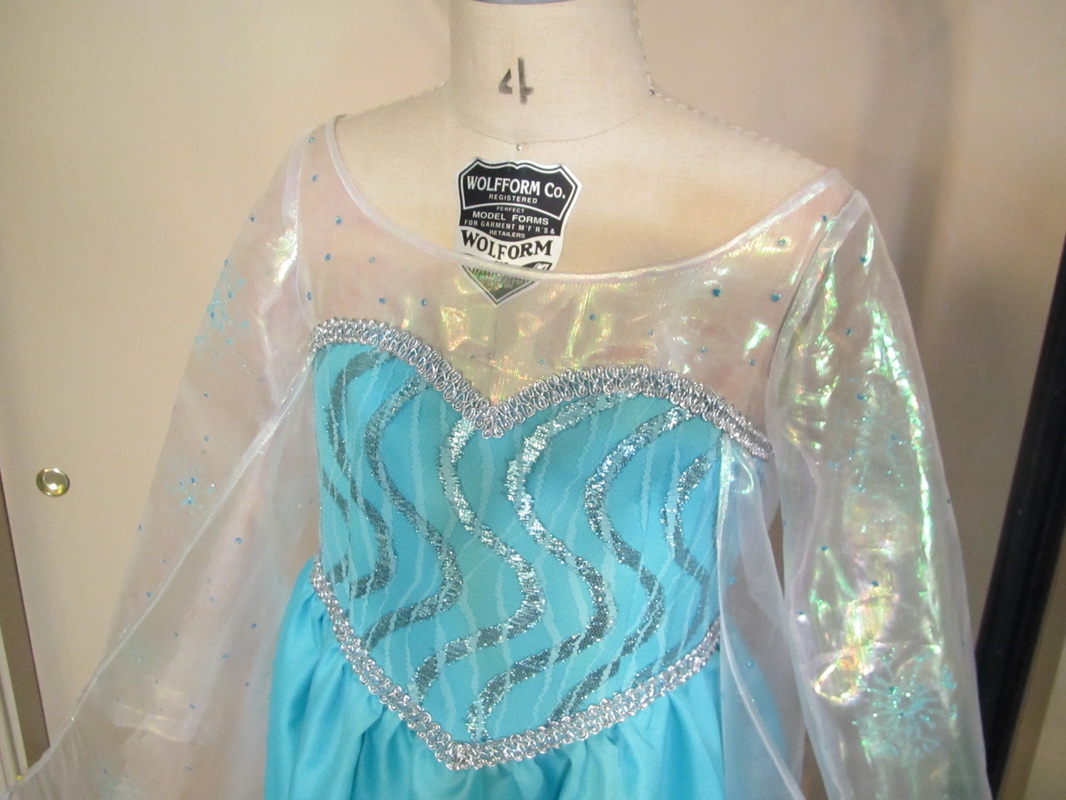
 RSS Feed
RSS Feed